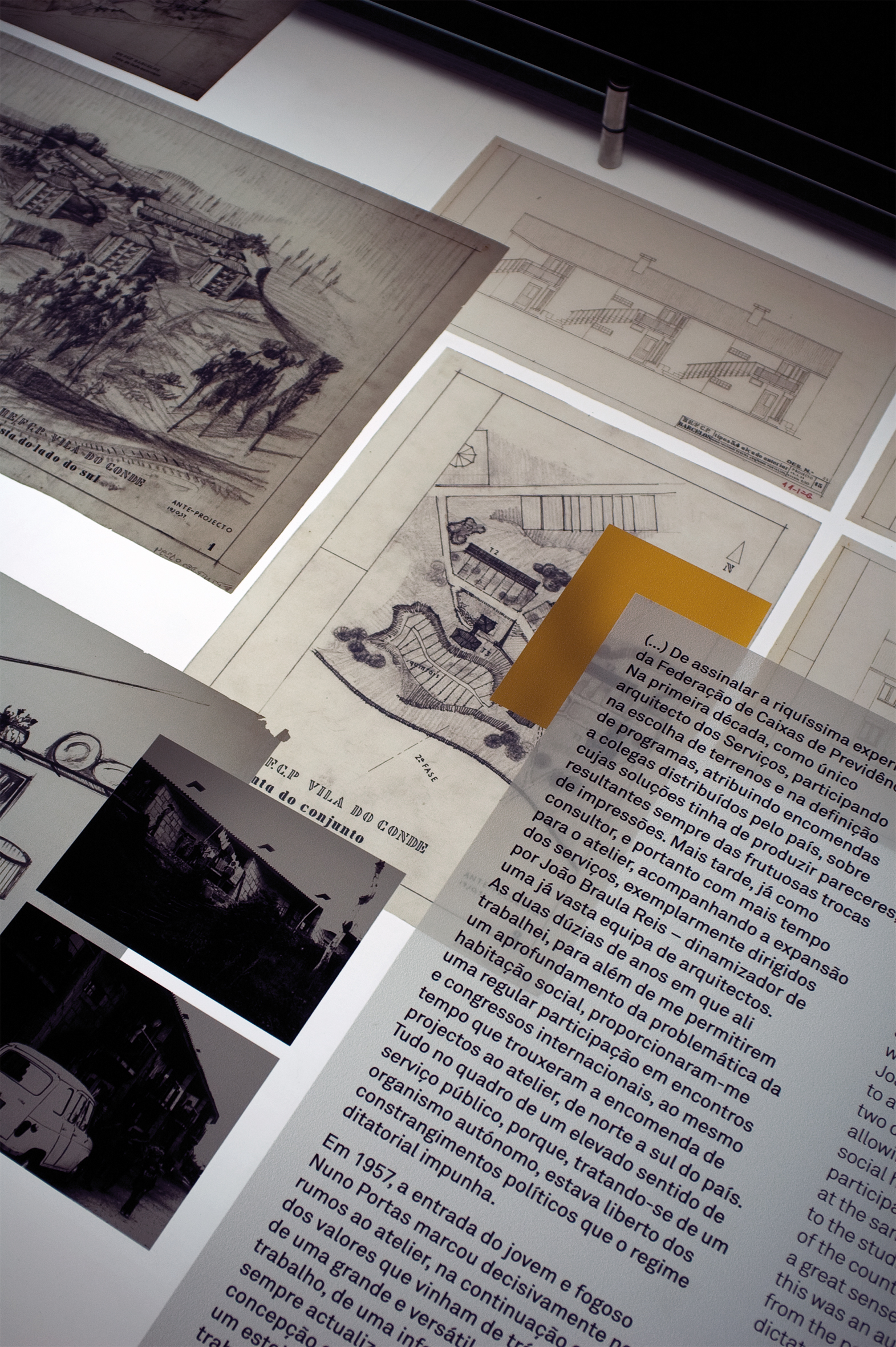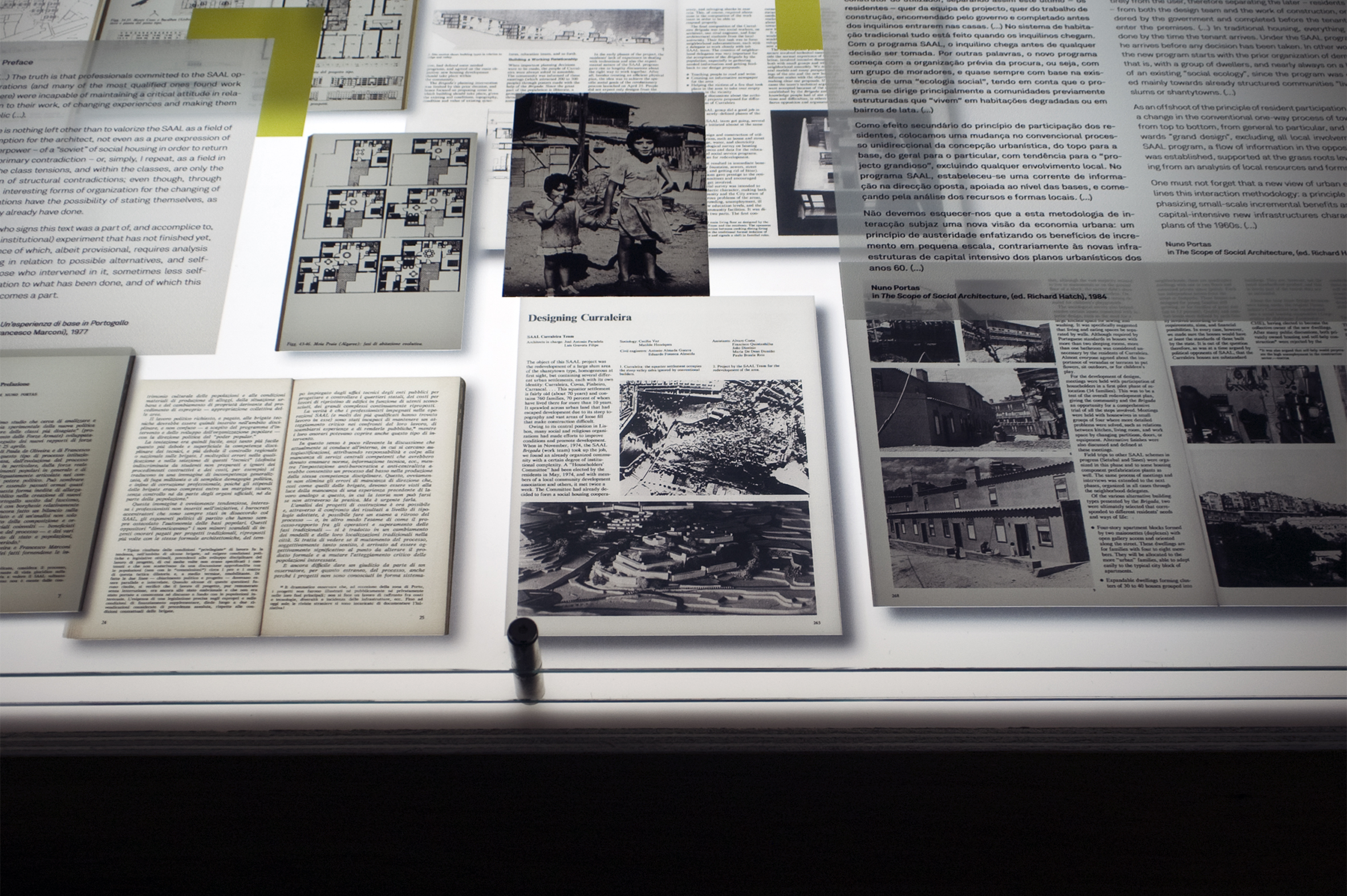O Ser Urbano_2
Exhibition Design (Architecture)
Commissioned by Guimarães 2012, European Capital of Culture and curated by architect Nuno Grande, this major exhibition presented a number of challenges. How do you design an exhibition which consists largely of texts and in which there are no artifacts apart from architectural models? And that covers nearly fifty years of professional activity not just of one man but of a profession itself? These were the principle questions put to me by Nuno Grande.



Above: Exhibition posters. After the inaugural exhibition in Guimarães in 2012, the exhibition travelled to two other venues: Lisbon and Rio de Janeiro, both in 2013.


The reading of a book does not require the viewer to move around. Instead the pages of the book are moved to reveal the content. For an exhibition the opposite is true. The viewer moves whilst the exhibits remain still. And because people don't like to stay still for too long in a space where there's lots to see, it's not a good idea to demand that they do. But to do justice to the work of Nuno Portas is to reveal his thinking, developed primarily through critical texts and debates. To aggravate the challenge, the many books, magazines and documents that Portas wrote and contributed to over many years were not available to to included in the exhibition. So no objects there also. The conclusion was that almost all the content had to be reproduced 'graphically'. First thoughts bought up disturbing visions of a very flat exhibition!
To avoid this Nuno Grande and I discussed various options until it was decided that an interesting option would be be for the exhibition to work (to be read) horizontally through the construction of 'tables' of some sort. It seemed imperative that depth be created and for that reason I pursued the idea of layers of information which soon developed conceptual capital as a reflection of the layers of meaning in the work of Nuno Portas, both theoretical and historical. It also became evident that the visual echoing of a city landscape with its streets and buildings was also possible. And to this effect, the horizontal reading of this exhibition landscape would be interrupted by 'navigational' towers – structures that signaled the six chronological units in which it was divided. Again, flat surfaces were avoided by giving the textual information three dimensions.
The layers on the tables were created through the use of three illuminated layers – one of white perspex and the other two of tempered glass. The illuminated tables had a dual practicality. Not only did they light the work displayed but they also removed the need for any other independent lighting – the exhibition thus became self-illuminating.














Client: Guimarães 2012 – European Capital of Culture
Venue: Fábrica ASA, Guimarães
Duration: March–May 2012